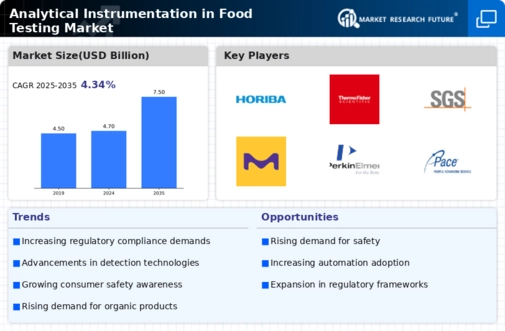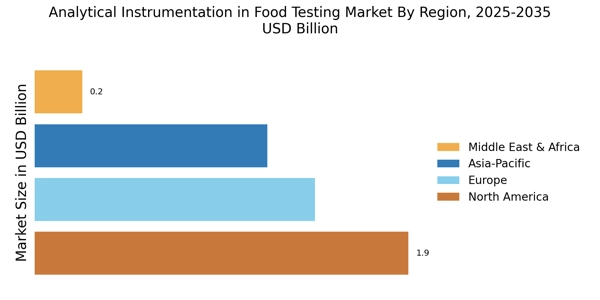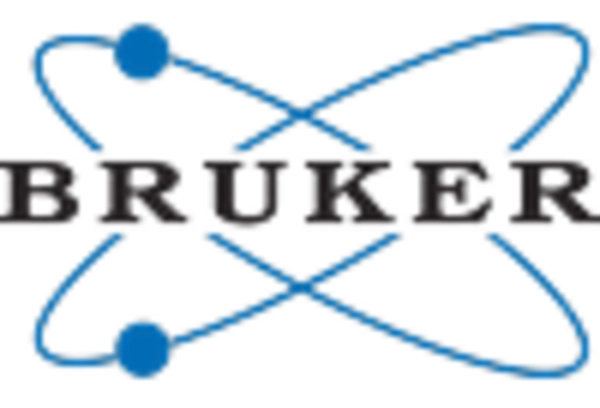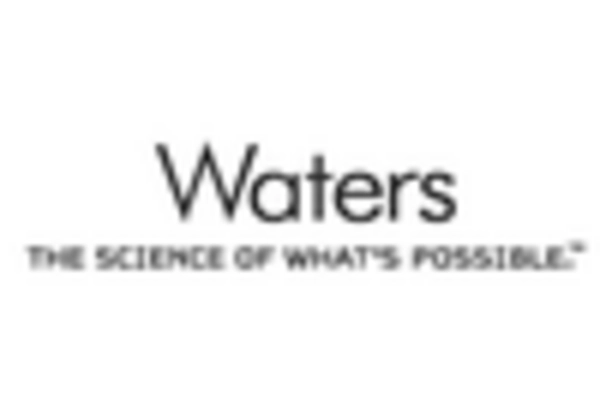Rising Consumer Awareness
The increasing awareness among consumers regarding food safety and quality is a pivotal driver for the Analytical Instrumentation in Food Testing Market. As consumers become more informed about the potential health risks associated with contaminated food, they demand higher standards of safety and quality assurance. This trend is reflected in the growing preference for products that are tested and certified for safety. Consequently, food manufacturers are compelled to invest in advanced analytical instrumentation to meet these consumer expectations. The market for food testing is projected to reach USD 20 billion by 2026, indicating a robust growth trajectory driven by consumer demand for transparency and safety in food products.
Technological Advancements
Technological advancements in analytical instrumentation are significantly influencing the Analytical Instrumentation in Food Testing Market. Innovations such as high-performance liquid chromatography (HPLC), mass spectrometry, and near-infrared spectroscopy are enhancing the accuracy and efficiency of food testing processes. These technologies enable rapid detection of contaminants and nutritional analysis, which are crucial for compliance with stringent food safety regulations. The integration of artificial intelligence and machine learning in analytical instruments is also streamlining data analysis, thereby improving decision-making processes in food safety management. As a result, the market is expected to witness a compound annual growth rate (CAGR) of approximately 7% over the next five years.
Stringent Food Safety Regulations
The imposition of stringent food safety regulations by various authorities is a critical driver for the Analytical Instrumentation in Food Testing Market. Regulatory bodies are increasingly mandating comprehensive testing protocols to ensure food safety and quality. This has led to a surge in demand for analytical instruments that can provide accurate and reliable testing results. For instance, the Food and Drug Administration (FDA) and the European Food Safety Authority (EFSA) have established rigorous guidelines that necessitate the use of advanced analytical techniques. Consequently, food manufacturers are investing heavily in analytical instrumentation to comply with these regulations, thereby propelling market growth. The market is anticipated to expand as compliance becomes a priority for food businesses.
Focus on Quality Assurance and Control
The emphasis on quality assurance and control within the food industry is driving the Analytical Instrumentation in Food Testing Market. Companies are increasingly recognizing the importance of maintaining high-quality standards to enhance consumer trust and brand reputation. This focus on quality has led to the adoption of sophisticated analytical techniques to monitor and control food quality throughout the production process. The implementation of quality management systems and continuous monitoring practices is becoming commonplace, thereby increasing the demand for analytical instruments. As businesses strive to meet consumer expectations and regulatory requirements, the market for analytical instrumentation is poised for growth, with an expected increase in demand for quality control solutions.
Growth of the Food and Beverage Industry
The expansion of the food and beverage industry is a significant driver for the Analytical Instrumentation in Food Testing Market. As the industry continues to grow, the demand for high-quality food products increases, necessitating rigorous testing to ensure safety and compliance. The rise in processed and packaged food consumption has further amplified the need for effective analytical testing methods. According to industry reports, the food and beverage sector is expected to grow at a CAGR of 5% through 2027, which will likely lead to increased investments in analytical instrumentation. This growth presents opportunities for manufacturers of analytical instruments to cater to the evolving needs of the food industry.


















Leave a Comment